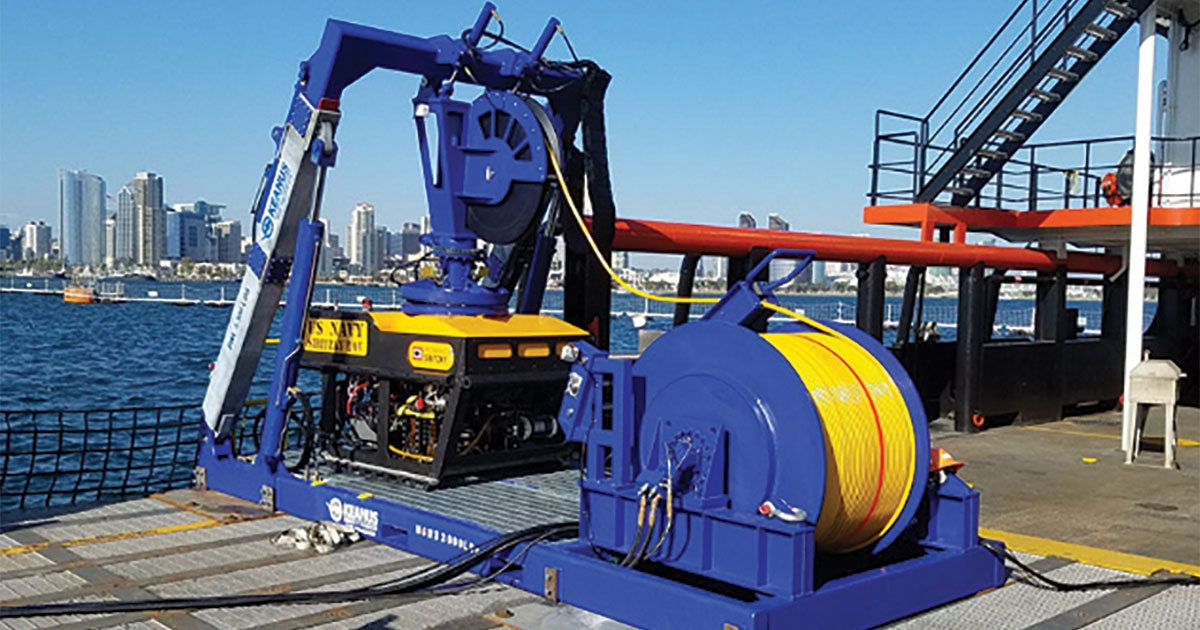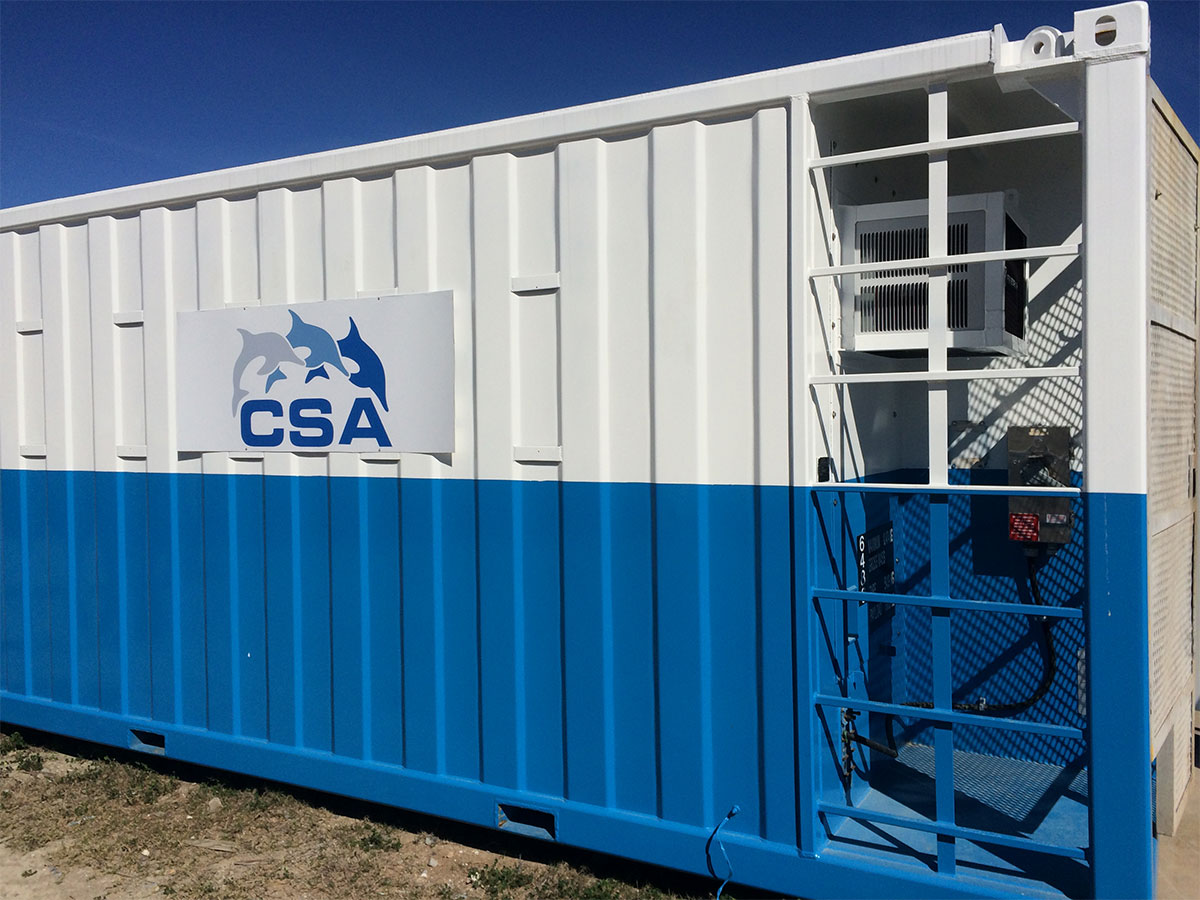
Enhancing Marine Environmental Monitoring in the US Gulf of Mexico
It is hard to overstate the strategic importance of the US Gulf of Mexico (GOM) to the long-term energy security and socioeconomic prosperity of the United States. According to the Bureau of Ocean Energy Management (BOEM), the offshore oil and gas industry in the US GOM generates 97% of Outer Continental Shelf (OCS) oil and gas production in the US. Not only do OCS oil and gas revenues—which totaled $4.1 billion in 2021—account for significant contributions to the US Treasury’s General Fund from lease sales, royalties on production, and rental fees, but the GOM accounts for 15% of total US crude oil production (Energy Information Administration, 2023).
With average daily GOM production fluctuating in recent years from 1.5–2.0 million barrels per day for crude oil and 1.5–2.5 billion cubic feet per day, and discoverable, recoverable, and commercially viable reserves in the GOM, according to a report published by BOEM in September 2021, at 4.65 billion barrels of oil and 6.1 trillion cubic feet of gas, the long-term role and outlook for the GOM energy industry is buoyant.

The LISST-Holo2 is one instrument being used to examine the size distribution and origin of suspended droplets and particles in the marine environment. (Image credit: Sequoia)
However, beyond the energy interests, thousands of residents and businesses—extending from the shoreline to the deep ocean—rely on the GOM’s ecosystem services for tourism, fisheries, marine resources, and more. Therefore, future ambitions to build, maintain, and decommission a growing network of interdependent subsea structures, to power both offshore oil and gas and renewables projects, hinge evermore on a continued multistakeholder commitment to proactively plan, monitor, and document responsible and sustainable exploration and production activities.
MARINE SAMPLING & MONITORING
There is a long and well-documented history of such environmental stewardship among offshore operators in the GOM, a culture of corporate sustainability and social corporate responsibility (CSR) that not only spans decades but is also subject to an evolving framework of comprehensive and stringent regulatory requirements. These regulations and operating guidelines set out, among other best practices, a list of ongoing environmental monitoring and intervention protocols, which range from Environmental Impact Assessment (EIA) assessments in early project planning to the scheduled sampling and monitoring of permitted effluents to the rapid response procedures following any unanticipated discharges.
The ability to view and analyze environmental information in real time is critical to timely and data-led decision-making. The successful execution of sampling campaigns relies on the interplay of three fundamental components: 1) a toolkit of the latest technologies and instrumentation to collect and process essential environmental data; 2) extensive in-the-field working knowledge of the target survey site; 3) a proven scientific subject matter expertise to not only interpret the data but also set out a series of recommendations and future considerations to mitigate the marine environment from any potential impacts.
These are the three pillars around which CSA Ocean Sciences Inc. (CSA) was established in 1970. For more than 53 years, CSA has partnered with offshore energy developers and government agencies in the GOM to establish a programmatic approach to multidisciplinary marine survey projects to better understand baseline marine environmental characteristics, identify spilled contaminants, and assess damage following an accidental discharge.
SURFACE MONITORING EQUIPMENT
Securing quick access to the appropriate equipment and specialist services to efficiently and systematically respond to these needs following an oil spill is one of the key challenges for GOM operatorsFLOAT. Too often, sampling equipment is not purpose-built, not rugged enough for the marine environment (not fit-for-purpose), or improperly maintained.
A reliable and robust response toolkit requires the integration of instrumentation, software, communication systems, and launch and recovery systems well in advance of an actual incident. If the correct equipment for the job needs to be sourced from disparate suppliers at short notice, the guarantees of availability, maintenance history, or general suitability are drawn into question.
One obvious solution is to pool resources—sharing tried-and-tested, fully customized environmental sampling equipment allows teams to take a more proactive approach to assembling the right tools for the right response in advance of an incident. Further, in the event of an accidental discharge or spill, this facilitates a rapid and concerted deployment, the costs of which can be evenly distributed among dozens of companies. Deepwater operators in the GOM already share monitoring equipment through industry consortia like HWCG LLC and Marine Well Containment Company (MWCC), but these toolkits are subject to shifting regulations, and so are scrutinized closely.

The SME program's DNV- and ABS-rated Control Van and command center. (Image credit: CSA)
In 2023, a team of marine scientists and field operations experts from CSA recently joined forces with HWCG to design, select, and test a new Surface Monitoring Equipment (SME) program in response to new regulatory requirements for the use of dispersants when responding to oil discharges into US waters. When responding to oil discharges, as governed by the US Code of Federal Regulations (CFR) Title 40, Part 300: National Oil and Hazardous Substances Pollution Contingency Plan, Subpart J (40 CFR 300.913), the use of surface dispersants for more than 96 hours or in response to a discharge of more than 100,000 gallons in 24 hours, calls for the collection of water samples and data near the ocean surface, including droplet size distribution, conductivity, temperature, dissolved oxygen, methane, pH, in-situ fluorescence, and salinity.
Depending on the depth, the sensor instrumentation—such as the submersible particle size analyzer and CTDs—is deployed using a towed body or a cast system. An Okeanus LARS (Launch and Recovery System) with a winch, skid-mounted A-frame, and custom cable to 100 m water depth was selected for safe and reliable deck handling. The equipment package also included a custom Control Van, a DNV- and ABS-rated, climate-controlled workspace designed to be used as a command center during both onshore standby and when deployed at sea.
The selection of individual elements of the SME toolkit—both hardware and software—was based not only on the regulatory requirements and the US Coast Guard’s Special Monitoring of Applied Response Technologies (SMART) Protocol but also on CSA’s vast experience with the integration and deployment of commercial marine sampling and monitoring equipment in challenging marine environments. The SME program is now operational, and HWCG and CSA are offering participation in all offshore infrastructure projects in the GOM to improve accessibility to crucial environmental monitoring assets.
LOOKING TO THE FUTURE
Beyond enabling quick and cost-effective access to sampling and monitoring equipment, the SME program will: help customers update their specific Oil Spill Response Plans; provide them with access to scientific and operational support; allow participants to run surface ocean monitoring and deepwater monitoring equipment simultaneously, on different vessels, for a maximum tactical response in the event of a significant oil spill; and improve the likelihood that dispersant use can be authorized and implemented rapidly, ultimately reducing potential impacts to the environment and to human health and safety by reducing oil on the sea surface and oil coming ashore.
Perhaps more than anything, though, as the global energy industry seeks to futureproof offshore exploration, initiatives such as this—which encourage shared learning and collective intervention—will only further engrain a sense of cross-sector guardianship of the GOM.
This feature appeared in ON&T Magazine’s 2023 October / November The Offshore Developer’s Toolkit edition, to read more access the magazine here.
Corporate Headquarters
8502 SW Kansas Ave.
Stuart, FL 34997

